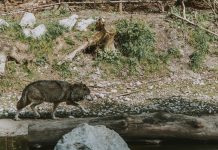The Potter Paleo Indian hunting camp site sits in the Moose River Valley in north-central New Hampshire. Extensive archeological work took place between 2003 and 2009 at the site. Because of the importance of the site, it has now to added to the National Register of Historic Places.
Ancient Hunting Camp at Potter’s Site
After studying the site over the years, researchers have decided that the camp was being actively used by Paleo Indians around from 12,500 to 10,500 B.C. During the studying of the site, researchers found a plethora of stone and bone tools. Likewise, they also found evidence of at least 3 household encampment locations. Along with the household locations, they also discovered multiple tool production locations within the site. These tool production locations were mostly made to make tools for hunting and fishing. The type of debris recovered at the site has also lead researchers to believe that the site was used seasonally by its inhabitants.
A Caribou Hunting Camp
From items found at the site, the location of the site, and the area’s unique topography, researchers are fairly certain this site was used as a caribou hunting base camp. At that time, the Ice Age fading. The glaciers had started to retreat back towards the north pole. As a result, the glaciers left behind wonderful habitat for the caribou. It is widely believed that most caribou followed the glaciers out of the eastern woodlands and ended up where they now live in Canada and Alaska.
Once the caribou moved in, so did the Paleo Indians. Hunting and fishing were a major part of life for Paleo Indian peoples. Without it, they simply wouldn’t have survived. It is also believed that the Paleo Indians would “migrate” from camp to camp based on when the caribou moved away from an area. New Hampshire has several Paleo Indian sites that seem to confirm this belief.
“Potter Site’s layout indicates that three household encampments were scattered across the area. Along with three stone tool production workshops, a wooden tool production workshop, and three undefined activity sites. When inhabited, the household encampments and workshop areas would have been within a few feet of each other. – New Hampshire Department of Natural & Cultural Resources
Because of the historical significance of the site, officials have decided to add the site to the National Register of Historic Places. Being added to the Registry helps give the site some more recognition.
What are your thoughts on this caribou hunting camp? Have you ever found any unique artifacts while hunting? Let us know in the comments!















